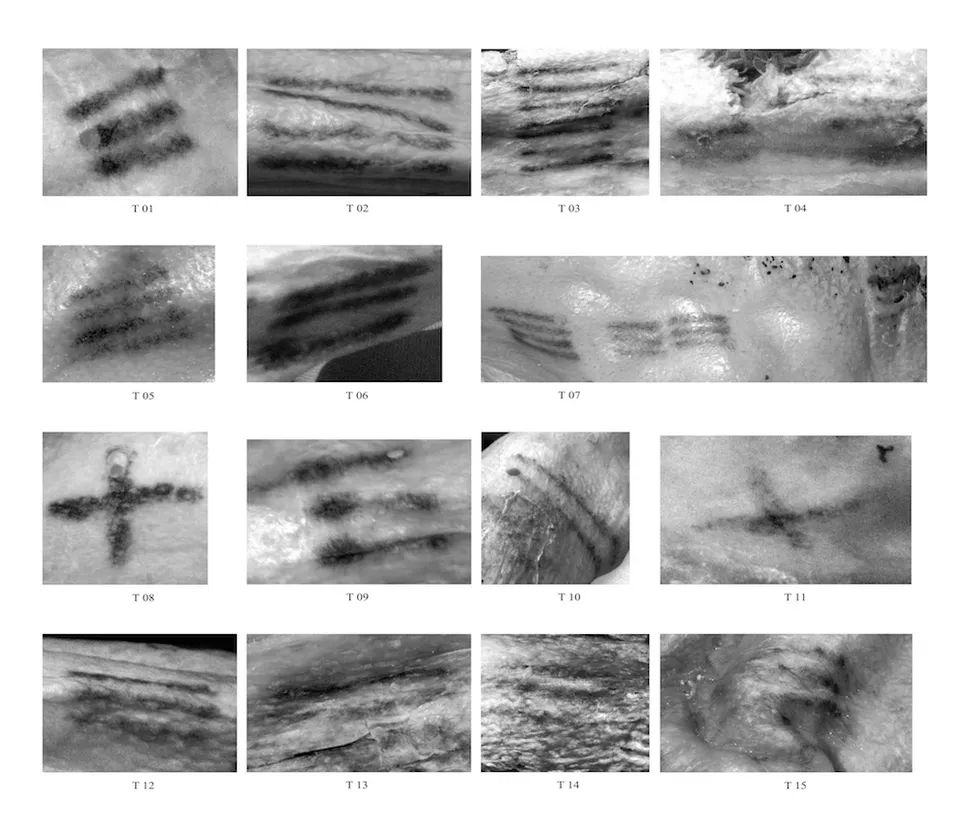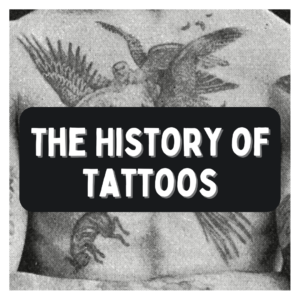April 14th, 2023
Everybody knows what tattoos are; they’ve seen the intricate designs, some colourful or some neutral, and can identify them when they see them. But does everybody know their origins and where they came from? Tattoos have a long and deep history, one that many don’t know about.
It was first believed that the oldest tattoo was on a female mummy from ancient Egypt dating back 2,000 BCE. But in 1991 the mummy “Otzi Iceman” was found in the area of the Italian-Austrian border, with he and his tattoo patterns being carbon-dated around 5,200 years ago. The “Iceman”’s tattoos are placed on his lower spine, right knee, and ankle joints in a pattern of dots and small crosses. The tattoos correspond to areas of strain-induced degeneration, so Professor Don Brothwell of the University of York, a specialist who examined the mummy, concluded that the tattoos may have been applied to alleviate joint pain and therefore have a therapeutic effect/meaning. As well, the tattoo placement has a random distribution pattern, meaning that they are too discreet and hidden to perhaps show/present social status or as a status marker.

Women in Ancient Egypt were also found with tattoos, particularly on their thighs. There have been 3 female mummies, dating back to 4,000-3,500 BCE, 1,300 BCE, and 1,200 BCE, found with tattoos, and the figurines in their tombs also have the same tattoo patterns. There were also bronze instruments identified as tattooing tools found in the town site of Gurob in northern Egypt and can be dated back to 1,450 BCE. The purpose of these tattoos, because they were only tattooed on women, were to identify them as prostitutes, protect them against sexually transmitted diseases, and act as a permanent amulet to defend them in times of difficult pregnancies and childbirth.
Many different ancient and present cultures use tattoos. The mummified remains of females in the Indigenous c-gr oup in the cemeteries of Kubban have blue tattoos, similar to those found on the females of Ancient Egypt, dating back to 2,000-2,500 BCE. The second male after ”Iceman” to have been found with tattoos was in the ice of Siberia, with ornate tattoos of mythical animals covering his limbs and torso dating back 2,400 years ago. He was later identified as a member of the ancient culture of the Scythian Pazyryk of the Altai Mountain region.
oup in the cemeteries of Kubban have blue tattoos, similar to those found on the females of Ancient Egypt, dating back to 2,000-2,500 BCE. The second male after ”Iceman” to have been found with tattoos was in the ice of Siberia, with ornate tattoos of mythical animals covering his limbs and torso dating back 2,400 years ago. He was later identified as a member of the ancient culture of the Scythian Pazyryk of the Altai Mountain region.
Tattoos were also found on pre-Columbian cultures in Peru and Chile, which replicated imags of animals and symbols found on their textiles and pottery. Tattoos were also used for criminals in China’s Taklamakan Desert during the Han Dynasty in 1,200 BCE. The Incas, Mayans, and Aztecs used tattooing in rituals and certain ceremonies. The Danes, Norse, and Saxons used tattoos to present their family crest on their bodies, and would often rub dirt into battle wounds to make the scarring appear more prominent and darker.
During the time of the Greeks and Romans, a stigma of tattoos and tattooing began. Tattoos were used to signify belonging, either to a religious group or to an owner if they were a slave as an attempt to mark them a criminal. The stigma became bigger with the spread of Christianity, with the thought of disfiguring and tainting that which is “God’s image”.
The word “tattoo” came from the Polynesiasn word “tatatau” or “tattau” which means to hit or strike. A comeback of tattoos began by the Polynesian culture’s practice of tattooing, which is highly elaborate with geometric designs that can cover the whole body. The Polynesian tattoo designs became popular amongst western sailors and coal-miners, which would be used like an “amulet” to protect the workers in their dangerous fields (anchors for the sailors and lamps for the coal-miners).

Many different Indigenous groups from around the world use tattoos for different purposes as well. The Inuit from Canada, Greenland, and some of Iceland use tattoos, called Kakiniit, to signify a female’s experiences and is a sacred practice between the women of the group. As well, the Maori from New Zealand use tattoos called Ta Moko to signify family, prosperity, travel, strength, and career paths.
In the ancient times there were two main methods to tattooing. The main method was to use a bone needle and an ink made of soot, urine, and oil to puncture the skin in little dots, like an ancient stick and poke tattoo. The other, less common way of tattooing was to take a sinew thread and needle with the same ink mixture and “sew” the thread through the outer layers of the skin. Nowadays a high impact tattoo gun is used, modeled after the one created by Samuel O’Reilly in 1891. O’Reilly was a tattoo artist in New York and formatted his patented tattoo machine off of Thomas Edison’s engraving machine patented in 1876.
Nowadays tattoos are part of our everyday life, for it is estimated that 1 out of 7 people in North America have at least one tattoo. The reason to get tattoos vary; someone could get them for religious purposes, for protection, as a source of power, an indication of group membership, a status symbol, artistic expression, for permanent cosmetics, or as an adjunct for reconstructive surgery. The reasons are endless, and we have now embraced tattoos like our ancestors have.
By : Caite Racicot
Categories: Fashion

